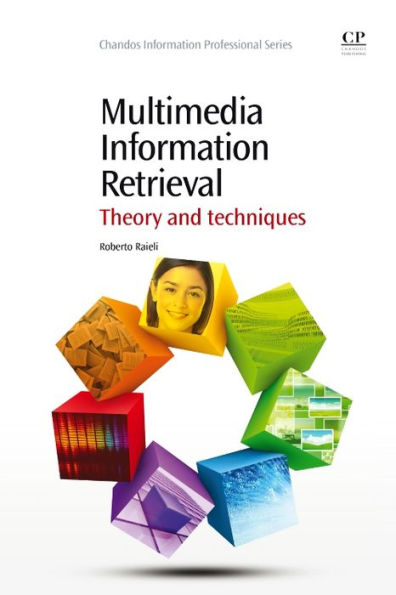Multimedia Information Retrieval: Theory and Techniques
Novel processing and searching tools for the management of new multimedia documents have developed. Multimedia Information Retrieval (MIR) is an organic system made up of Text Retrieval (TR); Visual Retrieval (VR); Video Retrieval (VDR); and Audio Retrieval (AR) systems. So that each type of digital document may be analysed and searched by the elements of language appropriate to its nature, search criteria must be extended. Such an approach is known as the Content Based Information Retrieval (CBIR), and is the core of MIR. This novel content-based concept of information handling needs to be integrated with more traditional semantics. Multimedia Information Retrieval focuses on the tools of processing and searching applicable to the content-based management of new multimedia documents. Translated from Italian by Giles Smith, the book is divided into two parts. Part one discusses MIR and related theories, and puts forward new methodologies; part two reviews various experimental and operating MIR systems, and presents technical and practical conclusions. - Gives a complete, organic picture of MIR and CBIR - Proposes a novel conceptualisation around the ideas of Information Retrieval (IR) and digital document management in the context of Library and Information Science (LIS) - Relevant for both library and information science and information technology specialists
1134784430
Multimedia Information Retrieval: Theory and Techniques
Novel processing and searching tools for the management of new multimedia documents have developed. Multimedia Information Retrieval (MIR) is an organic system made up of Text Retrieval (TR); Visual Retrieval (VR); Video Retrieval (VDR); and Audio Retrieval (AR) systems. So that each type of digital document may be analysed and searched by the elements of language appropriate to its nature, search criteria must be extended. Such an approach is known as the Content Based Information Retrieval (CBIR), and is the core of MIR. This novel content-based concept of information handling needs to be integrated with more traditional semantics. Multimedia Information Retrieval focuses on the tools of processing and searching applicable to the content-based management of new multimedia documents. Translated from Italian by Giles Smith, the book is divided into two parts. Part one discusses MIR and related theories, and puts forward new methodologies; part two reviews various experimental and operating MIR systems, and presents technical and practical conclusions. - Gives a complete, organic picture of MIR and CBIR - Proposes a novel conceptualisation around the ideas of Information Retrieval (IR) and digital document management in the context of Library and Information Science (LIS) - Relevant for both library and information science and information technology specialists
85.0
In Stock
5
1

Multimedia Information Retrieval: Theory and Techniques
376
Multimedia Information Retrieval: Theory and Techniques
376
85.0
In Stock

Product Details
| ISBN-13: | 9781780633886 |
|---|---|
| Publisher: | Chandos Publishing |
| Publication date: | 07/31/2013 |
| Series: | Chandos Information Professional Series |
| Sold by: | Barnes & Noble |
| Format: | eBook |
| Pages: | 376 |
| File size: | 7 MB |
About the Author
From the B&N Reads Blog
